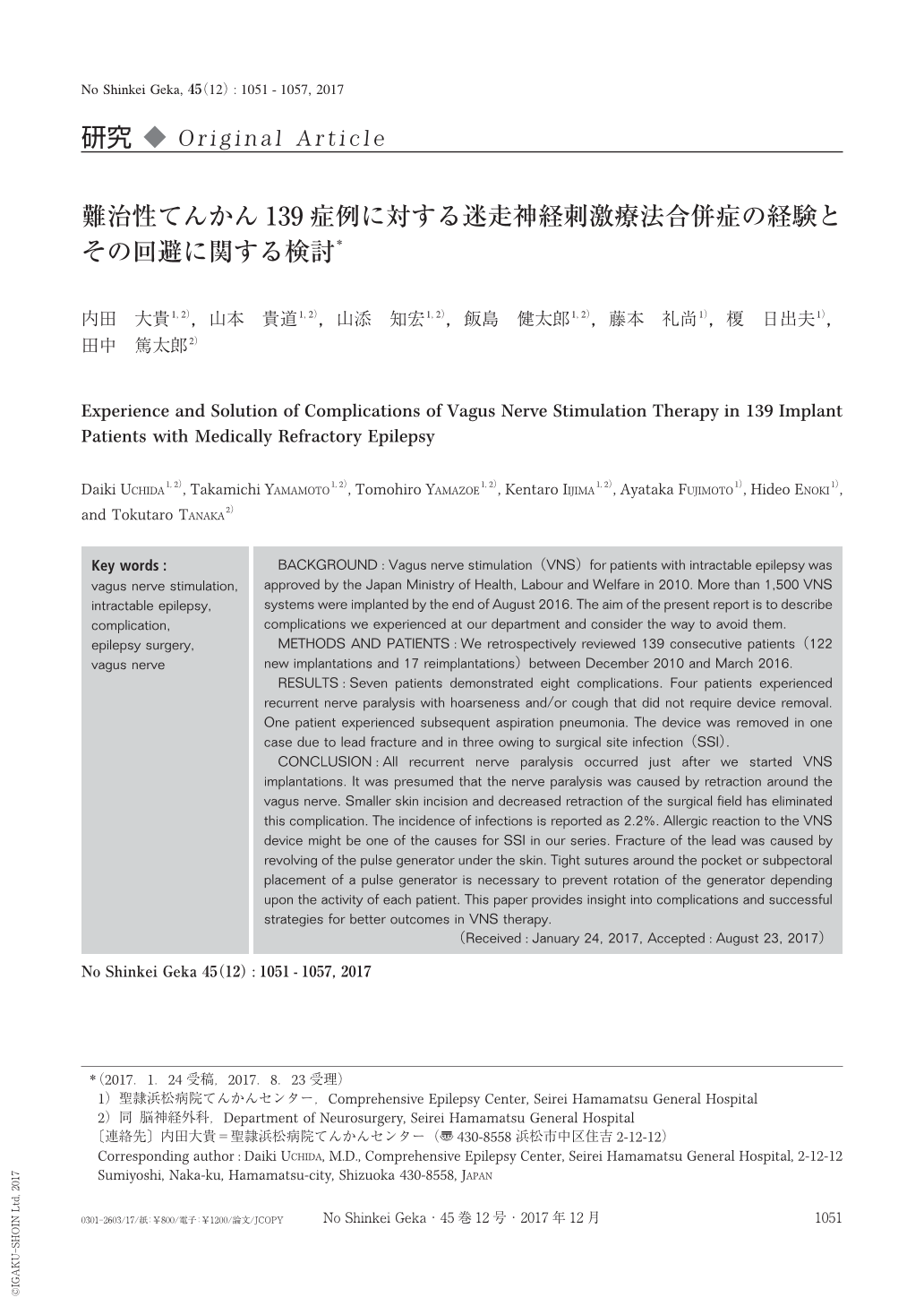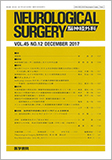Japanese
English
- 有料閲覧
- Abstract 文献概要
- 1ページ目 Look Inside
- 参考文献 Reference
Ⅰ.はじめに
迷走神経刺激療法(vagus nerve stimulation:VNS)は本邦において2010年1月に薬事法承認を受け,同年7月に保険適用となった.先進諸国に比して遅れて導入されたが,現在では難治性てんかんに対する緩和治療の1つとして広く普及しつつあり,2016年半ばの時点で1,500台を超えるVNS装置が使用されている.VNS装置植込み術は薬剤抵抗性難治性てんかん患者のうち,直達手術の適応とならない患者すべてが対象となり得る.そのため適応は非常に広く,有効性も十分確認されていることから,今後のさらなる普及が見込まれる1,5).
一方でVNS装置植込み術の合併症に関して,欧米からは1990年代より多くの報告があるが,手術方法,デバイスの違い,周術期管理の違いによって合併症発生率の報告にばらつきがある.また,長期間のフォローアップによって合併症が増加し得ると報告されているが2),これまでの報告は短期間の観察によるものが多くを占める.本邦において合併症を詳細に検討しているのは,下川らのVNS装置植込み術後の26症例における報告7)のみであり,VNS装置を留置した場合にどのような合併症が起こり得るのかについての報告は少ない.
われわれは2010年12月よりVNS装置植込み術を行っており,2016年3月までに122件の新規VNS装置植込み術および17件のジェネレータ交換を行った.今回,1施設における多数症例のフォローアップで経験した手術合併症を報告するとともに,合併症の対処方法,回避方法に関して検討した.
BACKGROUND:Vagus nerve stimulation(VNS)for patients with intractable epilepsy was approved by the Japan Ministry of Health, Labour and Welfare in 2010. More than 1,500 VNS systems were implanted by the end of August 2016. The aim of the present report is to describe complications we experienced at our department and consider the way to avoid them.
METHODS AND PATIENTS:We retrospectively reviewed 139 consecutive patients(122 new implantations and 17 reimplantations)between December 2010 and March 2016.
RESULTS:Seven patients demonstrated eight complications. Four patients experienced recurrent nerve paralysis with hoarseness and/or cough that did not require device removal. One patient experienced subsequent aspiration pneumonia. The device was removed in one case due to lead fracture and in three owing to surgical site infection(SSI).
CONCLUSION:All recurrent nerve paralysis occurred just after we started VNS implantations. It was presumed that the nerve paralysis was caused by retraction around the vagus nerve. Smaller skin incision and decreased retraction of the surgical field has eliminated this complication. The incidence of infections is reported as 2.2%. Allergic reaction to the VNS device might be one of the causes for SSI in our series. Fracture of the lead was caused by revolving of the pulse generator under the skin. Tight sutures around the pocket or subpectoral placement of a pulse generator is necessary to prevent rotation of the generator depending upon the activity of each patient. This paper provides insight into complications and successful strategies for better outcomes in VNS therapy.

Copyright © 2017, Igaku-Shoin Ltd. All rights reserved.


